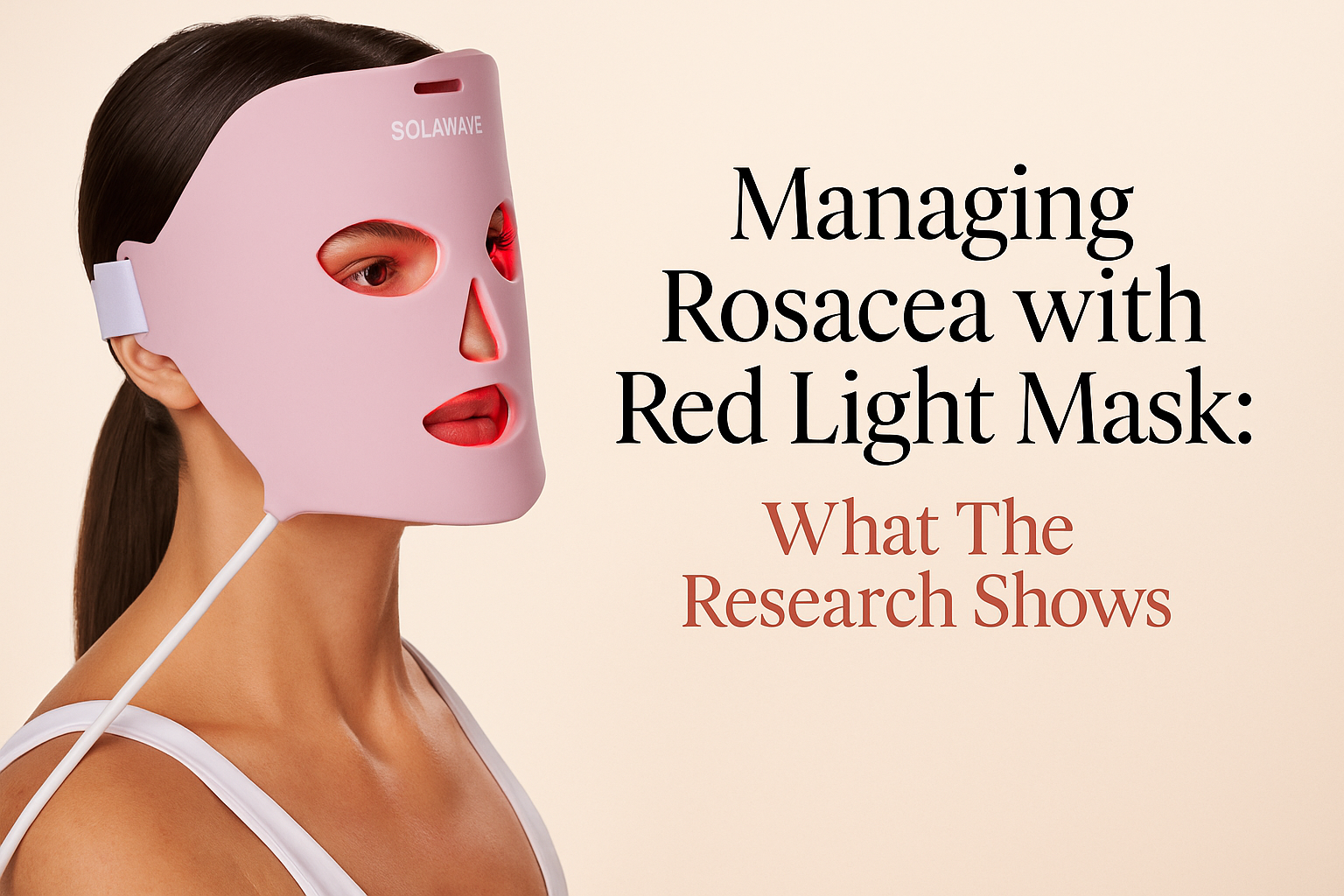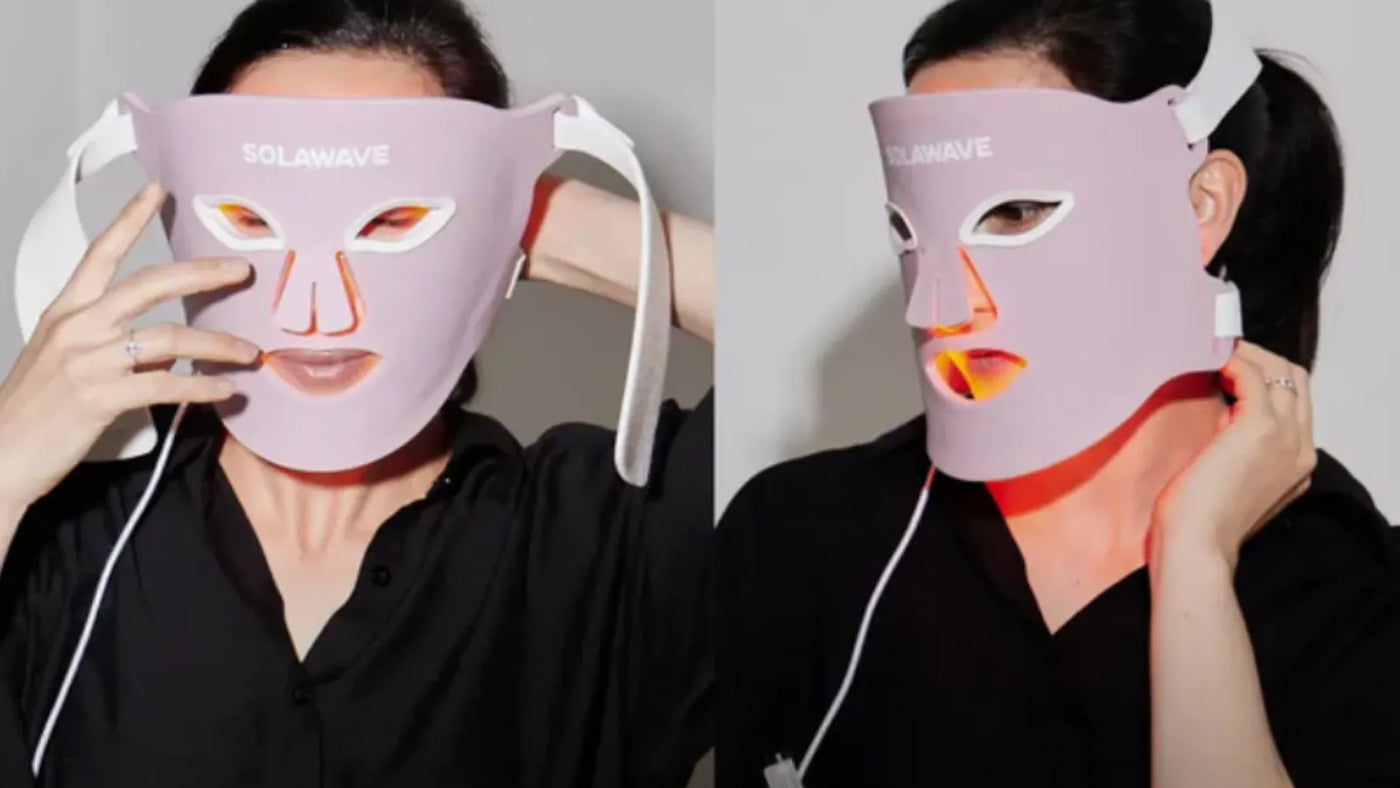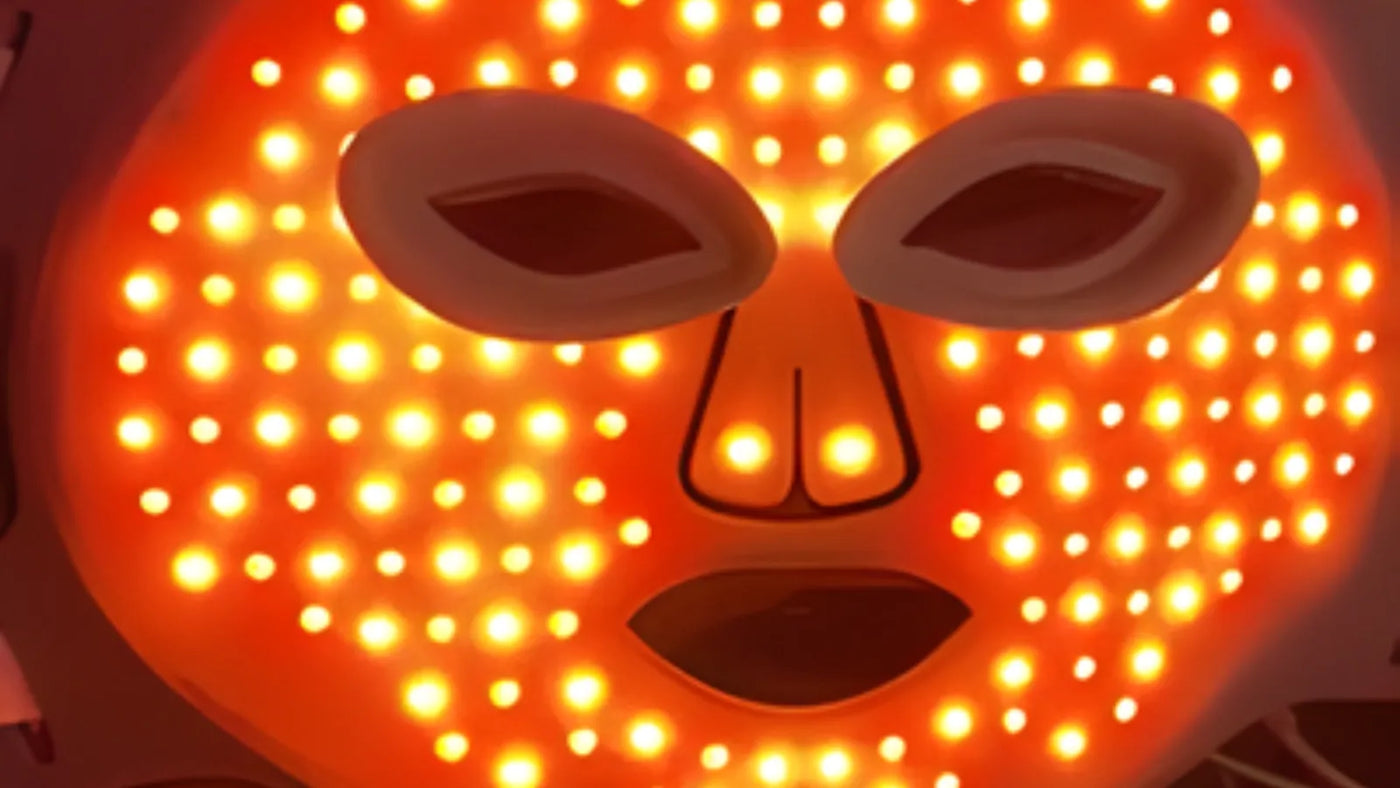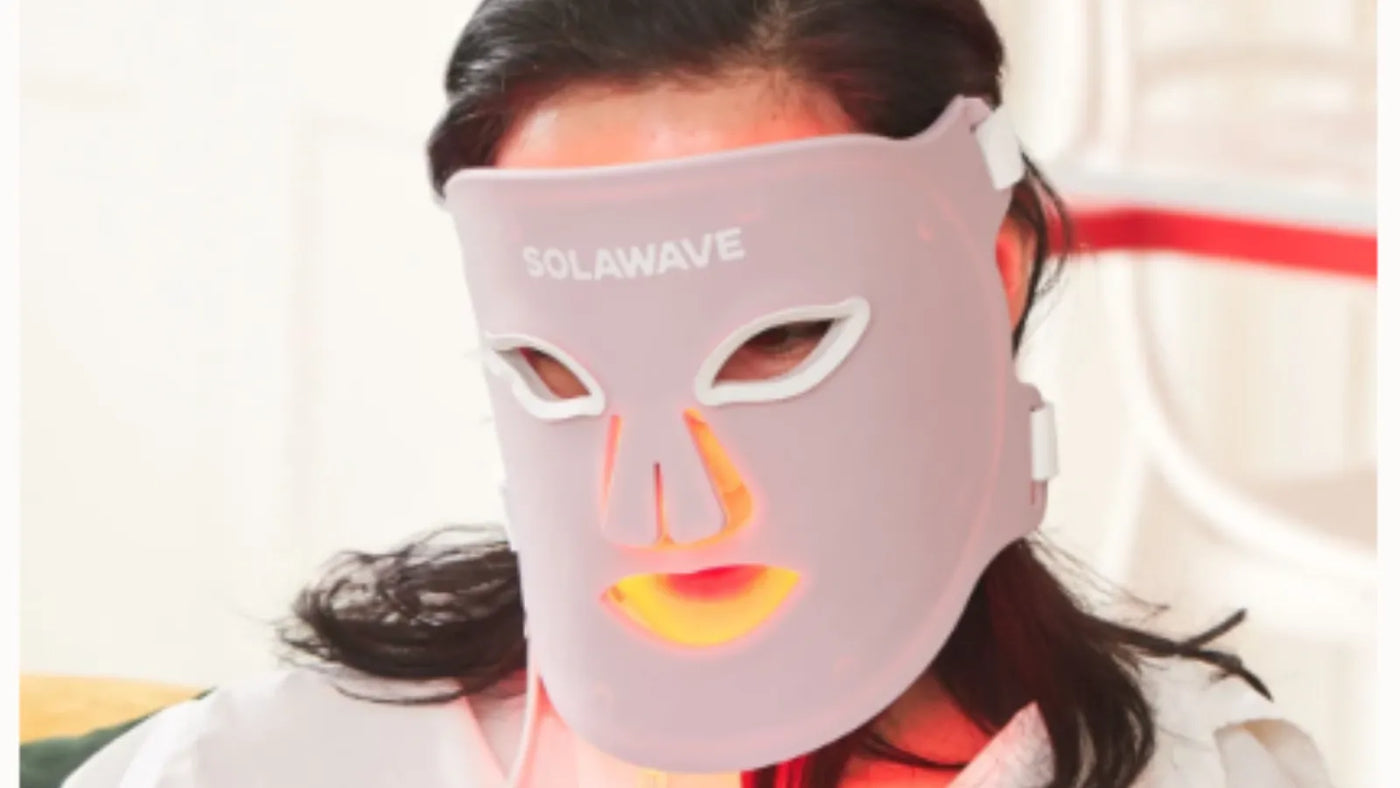

Managing Rosacea with Red Light Mask: What The Research Shows
Rosacea is a persistent skin condition that affects millions, especially women ages 30 to 60 with fair skin. The search for gentle, effective solutions has led many to try a red light mask for rosacea, a non-invasive option that’s growing in popularity. But does the science back it up? Here’s a comprehensive look at what research shows about using a red light mask or LED mask for rosacea as a rosacea treatment, plus practical guidance for those considering this innovative approach.
Understanding Rosacea: Why Is It So Challenging?
Rosacea is a chronic inflammatory skin disorder most commonly seen in adults with fair skin. It typically appears as redness, flushing, visible blood vessels, and sometimes acne-like bumps on the cheeks, nose, chin, and forehead. For some, it even affects the eyes. The condition is unpredictable, with symptoms flaring up in response to triggers such as:
-
Sun exposure
-
Stress
-
Hot or spicy foods
-
Alcohol
-
Certain skincare products
Managing rosacea is challenging because triggers are highly individual, and the condition often cycles between flare-ups and periods of calm. There’s no cure, so the focus is on controlling symptoms and reducing the frequency and severity of flares.
Traditional Rosacea Treatments: Where Do They Fall Short?
Conventional treatments for rosacea include topical creams (like metronidazole or azelaic acid), oral antibiotics, and sometimes procedures like laser or light therapy. While these can help, many people experience only partial relief or find the side effects—such as dryness, irritation, or antibiotic resistance—difficult to manage. This has led to growing interest in alternative solutions, such as the red light therapy mask.
Red Light Mask for Rosacea: How Does It Work?
A red light mask uses LEDs to deliver specific wavelengths of light, usually in the red (630–660 nm) and near-infrared (830–850 nm) range, directly to the skin. This light penetrates several millimeters into the skin, where it interacts with cells to encourage healing and reduce inflammation. Many customers find these masks easy to use at home, with sessions typically lasting 10 minutes.
How Red Light Therapy Supports Rosacea-Prone Skin
-
Reduces inflammation: Red light helps calm the inflammatory processes that drive rosacea symptoms, leading to less redness and swelling.
-
Promotes healing: By stimulating the mitochondria in skin cells, red light boosts cellular energy, which supports repair and regeneration.
-
Improves circulation: Enhanced blood flow delivers more oxygen and nutrients to the skin.
-
Strengthens the skin barrier: Regular use can help reinforce the skin’s natural defenses, making it less reactive to triggers.
For those looking to treat larger areas, such as the neck and chest, products like the Neck and Chest Red Light Therapy Mask LightBoost are also available.
What the Research Says About LED Mask for Rosacea
Clinical studies and case reports have shown that LED light therapy, especially when combining red and blue light, can significantly reduce rosacea symptoms. Here’s what the evidence shows:
-
Reduction in Redness and Inflammation: Clinical trials consistently report that red light therapy leads to visible reductions in facial redness and swelling. Some patients also see fewer papules and pustules.
-
Improved Skin Texture: Many participants note smoother, more even skin after 2 weeks of treatment.
-
Safe and Well-Tolerated: LED masks are non-invasive, gentle, and generally free from significant side effects, making them suitable for sensitive, rosacea-prone skin.
-
No Downtime: Unlike some laser treatments, LED masks do not require recovery time.
Case Study Highlights
A published case report described two patients with papulopustular rosacea who received a series of LED treatments combining blue and red light. Both saw a reduction in redness, burning, and itching after just 5 sessions, with further improvement after 10 sessions. The treatment was well tolerated and did not cause any adverse effects.
(Source: Created Internally)
How Does Red Light Therapy Compare to Other Light-Based Treatments?
While pulsed dye lasers (PDL) and intense pulsed light (IPL) are also used for rosacea, studies suggest that LED therapy offers similar benefits with less discomfort and risk, especially for ongoing management. Unlike lasers, LED masks are suitable for home use, making them more accessible for regular treatment.
How to Use a Red Light Mask for Rosacea
Consistency is key for managing rosacea with a red light mask. Most devices recommend:
-
Session Length: 10–20 minutes per session
-
Frequency: 2–4 times per week
-
Duration: Noticeable improvements often appear after 4–8 weeks, with best results after several months of regular use
Always follow the manufacturer’s instructions and start with clean, dry skin. For added benefit, pair your LED mask with gentle, rosacea-safe skincare products.
Choosing the Right LED Mask
Not all LED masks are created equal. When selecting a LED mask for rosacea, look for:
-
Clinically proven wavelengths (red 630–660 nm, near-infrared 830–850 nm)
-
Even light distribution for full-face coverage
-
FDA clearance or clinical testing for safety
-
Comfortable, lightweight design for easy use at home
Solawave’s award-winning devices combine multiple advanced technologies and are recommended by dermatologists and estheticians for their effectiveness and safety.
Can a Red Light Mask Cure Rosacea?
A red light mask cannot cure rosacea, but it can be an effective part of a rosacea treatment plan. Most users see the best results when combining red light therapy with other dermatologist-recommended treatments and a gentle skincare routine. The therapy helps manage symptoms, reduce flare-ups, and improve skin health over time.
What to Expect: Results and Side Effects
Expected Results
-
Reduced redness and flushing
-
Calmer, less irritated skin
-
Fewer bumps and breakouts (especially when blue light is included)
-
Smoother skin texture
Many users notice improvements within a few weeks, but consistent, long-term use is essential for lasting benefits.
Are There Any Side Effects?
Red light therapy is considered very safe, with minimal risk of side effects. Some people may experience mild warmth or temporary redness immediately after treatment, but this usually resolves quickly. Always consult a dermatologist if you have concerns or if your rosacea is severe.
How Does Red Light Mask Compare to Other Rosacea Treatments?
| Treatment Type | Pros | Cons |
|---|---|---|
| Red Light Mask | Non-invasive, safe, no downtime, home use | Requires consistency, not a cure |
| Topical Creams | Targeted, can reduce inflammation | May cause dryness, irritation |
| Oral Antibiotics | Effective for severe cases | Risk of resistance, side effects |
| Laser/IPL | Rapid results, targets blood vessels | Expensive, requires clinic visits, downtime |
| Lifestyle Changes | No side effects, long-term benefits | Requires ongoing effort |
Tips for Getting the Most from Your LED Mask for Rosacea
-
Start with shorter sessions if your skin is very sensitive, and gradually increase as tolerated.
-
Clean your mask regularly to avoid bacteria buildup.
-
Avoid using harsh skincare products before or after treatment.
-
Stick to a regular schedule for best results.
-
Pair with a gentle, hydrating moisturizer to support skin barrier repair.
Additional Considerations: Integrating Red Light Therapy into Your Routine
If you’re already using prescription treatments or over-the-counter rosacea products, it’s usually safe to add a red light mask to your regimen. However, always check with your dermatologist, especially if you’re using medications that increase light sensitivity.
Combining Red Light Therapy with Other Technologies
Some advanced devices, like those from Solawave, combine red light therapy with other proven skincare technologies, such as microcurrent, facial massage, and therapeutic warmth. This multi-modal approach can enhance results by addressing multiple aspects of skin health at once.
Treating More Than Just the Face
Rosacea can sometimes affect the neck and chest. For those seeking comprehensive coverage, the Neck and Chest Red Light Therapy Mask LightBoost Kit is designed to extend the benefits of red light therapy beyond the face, helping to calm redness and improve skin quality in these areas as well.
Real-World Experiences: What Customers Are Saying
Many people with rosacea report positive experiences with red light masks. Common themes in customer reviews include:
-
Noticeable reduction in redness and sensitivity
-
Fewer flare-ups and less discomfort
-
Improved confidence in their skin’s appearance
-
Appreciation for the convenience and ease of at-home treatments
While individual results vary, the overall trend is encouraging, with many users finding red light therapy to be a valuable addition to their rosacea management plan.
Final Thoughts
Managing rosacea can be frustrating, but advances in convenient at-home technology like the red light mask for rosacea offer new hope for those seeking gentle, effective relief. Research supports the use of red and near-infrared LED masks as a safe, non-invasive option that can help reduce redness, inflammation, and flare-ups when used consistently. While not a cure, this therapy can be a valuable addition to your rosacea treatment routine, especially when paired with professional guidance and a gentle skincare regimen.
If you’re considering adding a red light mask or LED mask for rosacea to your routine, look for devices with proven wavelengths, safety certifications, and positive clinical feedback. Solawave offers award-winning, dermatologist-recommended options for both the face and the neck/chest. With patience and regular use, you may find your skin looking and feeling calmer, clearer, and more resilient.
Frequently Asked Questions (FAQs)
Q. What is the best wavelength for treating rosacea with an LED mask?
Red light at 630–660 nm and near-infrared light at 830–850 nm are most effective for reducing inflammation and redness.
Q. How soon will I see results from a red light mask for rosacea?
Dermatologists and clinical research suggest improvements in redness and skin texture become visible within 4–8 weeks of regular use.
Q. Can I use a red light mask with my prescription rosacea treatments?
Yes, red light masks are generally safe to use alongside topical or oral treatments, but always check with your dermatologist first.
Key benefits of using a red light mask for rosacea:
-
Reduces redness and inflammation
-
Calms sensitive skin
-
No downtime or pain
-
Suitable for home use
Q. What should I avoid when using a red light mask for rosacea?
-
Do not use on broken or infected skin
-
Avoid combining with harsh exfoliants
-
Follow the manufacturer’s instructions for frequency and duration






















